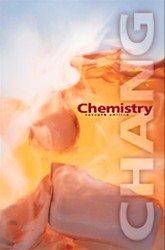 |  Chemistry, 7/e Raymond Chang,
Williams College
Chemical Bonding II: Molecular Geometry and Hybridization of Atomic Orbitals
Internet Exercises
()
- To provide experience
in identifying molecules from their 3D images, go to the Molecular Viewing
Gallery at http://www.dcu.ie/%7Echemist/pratt/pdb/gallery.htm,
and look first at the fluoroborate anion.
- What is the formula
of this ion?
- What is the formal
charge on the central atom?
- What is the geometry
of this ion?
Now open hydrogen peroxide - What is the formula
of this compound?
- How many lone pairs
of electrons are there in this compound?
- Do you suppose that
this is really the preferred (lowest energy) arrangement of the atoms?
That is, do the hydrogens really "want" to be on opposite sides of the
molecule?
Finally, open sulfur hexachloride. - How many lone pairs
are there on the central atom?
- What is the geometry
of this molecule?
- What hybridization
is adopted by the central atom?
|
 |  |  |
()
- The Molecular Viewing
Gallery provides an extensive list of Chime molecular images. At the address,
http://www.dcu.ie/%7Echemist/pratt/pdb/gallery.htm,
click on aniline, and answer the following questions.
- What is the hybridization
on each of the carbon atoms?
- What geometry corresponds
to this hybridization?
- What kinds of bonds
make up the C-C double bond?
|
|



 2002 McGraw-Hill Higher Education
2002 McGraw-Hill Higher Education